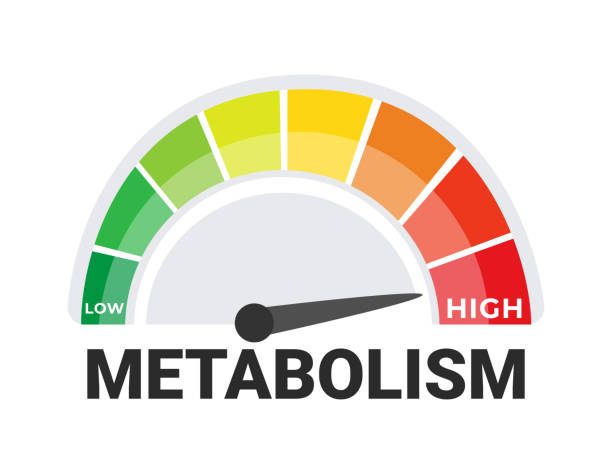Strength training, often associated with bodybuilders and athletes, is a powerful tool for anyone looking to lose weight. Unlike traditional cardio workouts, strength training builds muscle mass, boosts metabolism, and provides long-term weight management benefits. This article delves into the importance of strength training for weight loss, explaining how it works, the benefits it offers, and how to incorporate it into your fitness routine.
How Strength Training Aids Weight Loss

Boosts Metabolic Rate
Strength training increases muscle mass, which in turn elevates the resting metabolic rate (RMR). Muscles require more energy to maintain than fat, meaning that the more muscle you have, the more calories you burn at rest. This increased calorie expenditure can significantly aid in weight loss efforts.
Enhances Fat Loss
While cardio primarily burns calories during the activity, strength training has a prolonged effect. After a strength training session, your body continues to burn calories as it repairs muscle fibers, a process known as excess post-exercise oxygen consumption (EPOC) or the afterburn effect. This sustained calorie burn contributes to fat loss.
Preserves Lean Muscle Mass
When losing weight, it’s crucial to preserve lean muscle mass. Muscle loss can lead to a decrease in metabolic rate, making it harder to maintain weight loss. Strength training ensures that you lose fat while maintaining or even increasing muscle mass, leading to a more toned and defined physique.
Benefits of Strength Training for Weight Loss

Improved Body Composition
Strength training helps improve body composition by reducing body fat and increasing muscle mass. This not only enhances physical appearance but also improves overall health by reducing the risk of obesity-related conditions such as type 2 diabetes and heart disease.
Increased Strength and Endurance
As you build muscle, you also gain strength and endurance. This makes everyday activities easier and reduces the risk of injuries. Increased strength allows for more intense and varied workouts, further aiding weight loss.
Better Insulin Sensitivity
Strength training improves insulin sensitivity, allowing your body to use glucose more effectively. This reduces the risk of insulin resistance, a precursor to type 2 diabetes, and helps in managing blood sugar levels, making weight management easier.
Enhanced Mental Health
Exercise, including strength training, releases endorphins, which improve mood and reduce stress. Better mental health supports weight loss by reducing emotional eating and increasing motivation to stick to a fitness routine.
Incorporating Strength Training into Your Routine

Start with a Plan
Begin with a clear plan that includes your goals, the number of days you’ll train, and the exercises you’ll perform. A balanced routine should target all major muscle groups, including legs, back, chest, shoulders, arms, and core.
Choose the Right Exercises
Compound exercises, which work multiple muscle groups at once, are highly effective for strength training. Examples include squats, deadlifts, bench presses, and pull-ups. These exercises maximize calorie burn and muscle growth.
Progressive Overload
Progressive overload is the principle of gradually increasing the weight, frequency, or intensity of your workouts. This ensures continuous improvement and muscle growth. Track your progress and make adjustments as needed.
Combine with Cardiovascular Exercise
While strength training is crucial, combining it with cardiovascular exercise can enhance weight loss. Cardio workouts like running, cycling, or swimming improve cardiovascular health and increase overall calorie burn.
Nutrition Matters
A balanced diet supports strength training and weight loss. Focus on high-protein foods to aid muscle repair and growth, and ensure you’re consuming enough calories to fuel your workouts without exceeding your daily needs.
Common Misconceptions About Strength Training and Weight Loss

Strength Training Makes You Bulky
Many people, especially women, avoid strength training due to the fear of becoming bulky. In reality, building significant muscle mass requires a specific training and dietary regimen. Most people will experience increased muscle tone and definition rather than excessive bulk.
Cardio is Better for Weight Loss
While cardio burns more calories during the activity, strength training has a lasting impact on metabolism. A combination of both provides the best results for weight loss and overall fitness.
You Need Expensive Equipment
Strength training can be done with minimal equipment. Bodyweight exercises like push-ups, squats, and lunges are effective for building strength. Resistance bands and dumbbells are affordable options that can enhance your workouts.
Conclusion
Strength training is a vital component of an effective weight loss strategy. It boosts metabolism, preserves lean muscle mass, and offers numerous health benefits beyond weight loss. By incorporating strength training into your fitness routine, you can achieve a healthier, more toned body and maintain your weight loss in the long term. Remember, consistency and a balanced approach are key to seeing results. Start your strength training journey today and enjoy the benefits it brings to your weight loss efforts.
Frequently Asked Questions (FAQ)
Q. How often should I do strength training for weight loss?
A. For optimal results, aim to perform strength training exercises at least 2-3 times per week. Ensure you are targeting all major muscle groups and allowing adequate rest between sessions.
Q. Can I combine strength training with cardio?
A. Yes, combining strength training with cardio can provide excellent results for weight loss. Incorporate cardio exercises on days when you are not strength training, or perform a mix of both in the same session, depending on your fitness level and goals.
Q. Do I need to follow a specific diet while strength training for weight loss?
A. A balanced diet rich in protein, healthy fats, and complex carbohydrates supports muscle growth and recovery. Ensure you are consuming enough calories to fuel your workouts and aid recovery without exceeding your daily caloric needs.
Q. How long will it take to see results from strength training?
A. Results can vary depending on individual factors such as fitness level, diet, and consistency. Generally, you may start noticing improvements in strength and muscle tone within a few weeks, with significant changes in body composition and weight loss appearing over a few months.
Q. Can beginners start with strength training?
A. Absolutely! Beginners can start with basic bodyweight exercises and gradually progress to using weights and more complex movements. It is important to learn proper form and technique to prevent injuries and maximize effectiveness.





